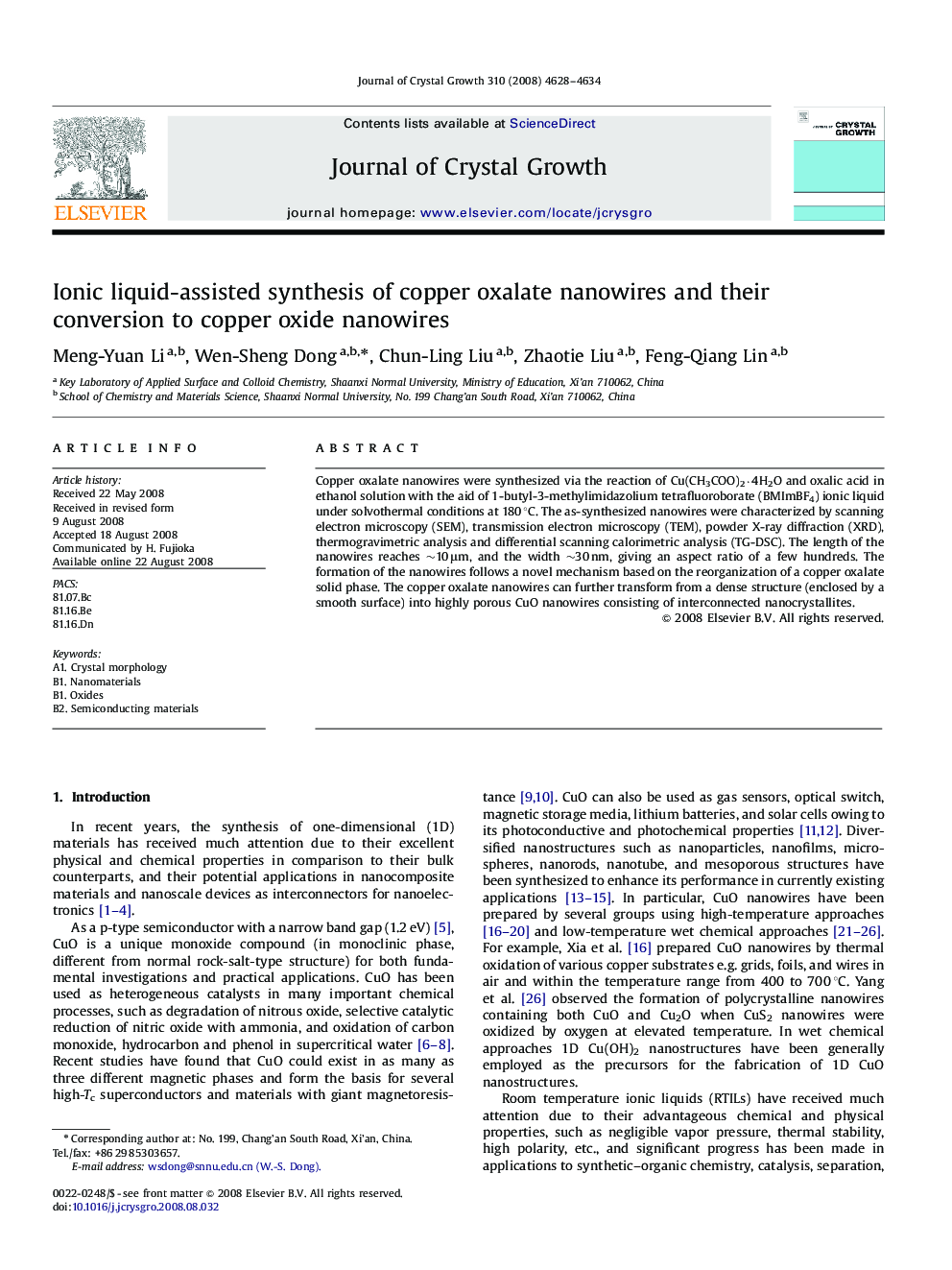| Article ID | Journal | Published Year | Pages | File Type |
|---|---|---|---|---|
| 1794079 | Journal of Crystal Growth | 2008 | 7 Pages |
Copper oxalate nanowires were synthesized via the reaction of Cu(CH3COO)2·4H2O and oxalic acid in ethanol solution with the aid of 1-butyl-3-methylimidazolium tetrafluoroborate (BMImBF4) ionic liquid under solvothermal conditions at 180 °C. The as-synthesized nanowires were characterized by scanning electron microscopy (SEM), transmission electron microscopy (TEM), powder X-ray diffraction (XRD), thermogravimetric analysis and differential scanning calorimetric analysis (TG-DSC). The length of the nanowires reaches ∼10 μm, and the width ∼30 nm, giving an aspect ratio of a few hundreds. The formation of the nanowires follows a novel mechanism based on the reorganization of a copper oxalate solid phase. The copper oxalate nanowires can further transform from a dense structure (enclosed by a smooth surface) into highly porous CuO nanowires consisting of interconnected nanocrystallites.
